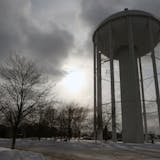A large house fire erupts in a St. Paul neighborhood, but crews at the nearest fire station are already at another call.
Trouble? Not really. Starting this week, an emergency dispatcher can see on a computer the location of the next closest fire rigs and ambulances and quickly send them to the scene.
The real-time feature is perhaps the most significant improvement in a new computer-aided dispatch (CAD) system recently launched in Ramsey County. The advanced system, which went live Tuesday morning, is designed to improve emergency response times.
The Ramsey County Emergency Communications Center in St. Paul is responsible for 911 calls in 16 communities, including St. Paul, and dispatching crews from 18 law enforcement agencies to help in emergencies. Last year, the center received 321,743 emergency calls.
"For us, CAD is central to everything that we do, from the moment we pick up the 911 call and ask the caller where they are … until the very last responding unit leaves the scene," said Scott Williams, county director of emergency communications.
Previously, in the case of fires, the dispatcher would alert the station nearest to the fire and perhaps other stations. Doing that, however, would often keep the dispatcher from other calls until the alerting was done and it was confirmed that units were en route.
With the new system, the call pops into the dispatcher's queue and the system makes recommendations on which crews to send to the scene based on drive time and the location of crews at the time of the call. The dispatcher then approves the system's recommendations and the chosen stations are alerted and dispatched. At that point, a computer-generated voice reads the call over the air, freeing the dispatcher to take the next call.
The advantage, Williams said, is that dispatchers can handle "multiple station calls faster" and "deal with simultaneous calls more quickly."
![A black bear stopped after crossing Big Bay Road on Madeline Island, the largest of the Apostle Islands in Wisconsin, on Monday, May 31, 2021. ]](https://arc.stimg.co/startribunemedia/PWNYGIY3WTSWDBOGOYD775DPP4.jpg?&w=80&ar=1:1&fit=crop)


